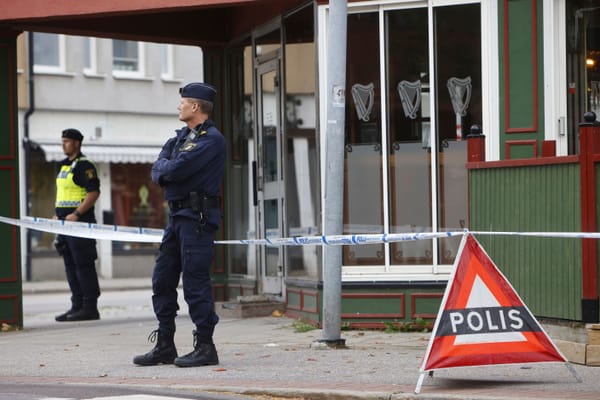Sweden is in the news again. On Sept. 28, Prime Minister Ulf Kristersson gave a somber speech to the nation on the gang war ravaging Sweden’s immigrant enclaves, which have recently suffered a string of killings of children and young adults. This gang war notably involves explosives: Bombings of apartments and attacks with hand grenades are common. The most recent wave of violence, which culminated in three murders in 24 hours, has attracted international coverage, with The Wall Street Journal recently calling the country “Europe’s gun-murder capital.” Commentators in Sweden and beyond are pointing to the crisis as a demonstration of where open-borders progressivism leads. In The European Conservative, the US-based Swedish economist Sven R. Larson described his native land as “on the brink of implosion.”
In Sweden, there is a saying that roughly translates as: “In this country, we only have room for one opinion at a time.” Sweden often deals with political and social anxieties over unresolved problems by turning its collective attention temporarily to a single issue, which is framed as a Manichaean struggle between light and darkness. The gloomy mood that has overtaken the country amid surging gang violence is the latest product of Swedish groupthink.
In 2014, concerns about the drawbacks of immigration were drowned out amid a witch hunt for “fascists” who dared to question the wisdom of admitting vast numbers of would-be asylum-seekers. In 2022, after Russia invaded Ukraine, all questions about the geopolitical future of the West were subsumed into a mania about defending freedom or beating back the Russian “mongols.” Now that the war in Ukraine has reached an impasse, a new all-consuming mania has taken its place. But whereas the previous mania about immigration insisted on its upsides, now the terms are reversed.
The reversal is understandable. Sweden’s gun-homicide rate is 2½ times the European average. Per-capita gun homicides are 30 times higher in Stockholm than in London. The homicide rate in Sweden shot to 1.4 per 100,000 inhabitants, from 0.9 per 100,000 inhabitants, right around the peak of the migrant crisis in 2015. Since then, it has hovered between 1.08 and 1.2 murders per 100,000 inhabitants.
